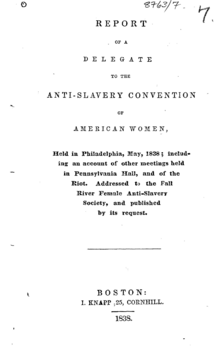Title (publishing)
The title of a book, or any other published text or work of art, is a name for the work which is usually chosen by the author. A title can be used to identify the work, to put it in context, to convey a minimal summary of its contents, and to pique the reader's curiosity.
Some works supplement the title with a
In
History
The first books, such as the Five Books of Moses, in Hebrew
In
When books take the form of a scroll or roll, as in the case of the

A book with pages is not a scroll, but a
As the book evolved, most books became the product of an author. Early books, like those of the Old Testament, did not have authors. Gradually the concept took hold—Homer is a complicated case—but authorship of books, all of which were or were believed to be non-fiction, was not the same as, since the Western Renaissance, writing a novel. The concept of intellectual property did not exist; copying another person's work was once praiseworthy. The invention of printing changed the economics of the book, making it possible for the owner of a manuscript to make money selling printed copies. The concept of authorship became much more important. The name of the author would also go on the title page.
Gradually more and more information was added to the title page: the location printed, the printer, at later dates the publisher, and the date. Sometimes a book's title continued at length, becoming an advertisement for the book which a possible purchaser would see in a bookshop (see example).
Typographical conventions
Most English-language style guides, including the Chicago Manual of Style, the
Titles may also be written in title case, with most or all words capitalized. This is true both when the title is written in or on the work in question, and when mentioned in other writing. The original author or publisher may deviate from this for stylistic purposes, and other publications might or might not replicate the original capitalization when mentioning the work. Quotes, italics, and underlines are generally not used in the title on the work itself.[4]
See also
- Headline – Text at the top of a newspaper article
References
- JSTOR 3724776.
- ^ "Do You Underline Book Titles?". May 29, 2012.
- Purdue OWL. March 1, 2013. Retrieved April 2, 2016.
- ^ "Which Titles Are Italicized and Which Are Enclosed in Quotation Marks?".
Further reading
- Adams, Hazard (Autumn 1987), "Titles, Titling, and Entitlement to", The Journal of Aesthetics and Art Criticism, 46 (1): 7–21, JSTOR 431304
- Adorno, Theodor (1984), "Titres", Notes sur la littérature, Paris
{{citation}}: CS1 maint: location missing publisher (link) - Ferry, Anne (1996), The Title to the Poem, Stanford University Press, ISBN 9780804735179
- Fisher, John (December 1984), "Entitling", Critical Inquiry, 11 (2): 286–298, S2CID 224800904
- S2CID 161111244
- Hélin, Maurice (September–December 1956), "Les livres et leurs titres", Marche Romane, 6: 139–152
- Hoek, Leo H. (1981), La marque du titre: Dispositifs sémiotiques d'une pratique textuelle, Approaches to Semiotics [AS], vol. 60
- Kellman, Steven G. (Spring 1975), "Dropping Names: the Poetics of Titles", Criticism, 17 (2): 152–167
- Levin, Harry (October 1977), "The Title as a Literary Genre", The Modern Language Review, 72 (4): xxiii–xxxvi, JSTOR 3724776
- Levinson, Jerrold (Autumn 1985), "Titles", The Journal of Aesthetics and Art Criticism, 44 (1): 29–39, JSTOR 430537
- Mulvihill, John (April 1998), "For Public Consumption: The Origin of Titling the Short Poem", The Journal of English and Germanic Philology, 97 (2): 190–204, JSTOR 27711639
- Oliver, Revilo P. (1951), "The First Medicean MS of Tacitus and the Titulature of Ancient Books", Transactions and Proceedings of the American Philological Association, 82: 232–261, JSTOR 283436
- Shevlin, Eleanor F. (1999), "'To Reconcile Book and Title, and Make 'em Kin to One Another': The Evolution of the Title's Contractual Functions", Book History, 2: 42–77, S2CID 143640018
- Sullivan, Ceri (July 2007), "Disposable Elements? Indications of Genre in Early Modern Titles", The Modern Language Review, 102 (3): 641–653, S2CID 163420249
- Vardi, Amiel D. (May 1993), "Why Attic Nights? Or What's in a Name?", The Classical Quarterly, New Series, 43 (1): 298–301, S2CID 170798738
- Wilsmore, S. J. (Summer 1987), "The Role of Titles in Identifying Literary Works", The Journal of Aesthetics and Art Criticism, 45 (4): 403–408, JSTOR 431331
